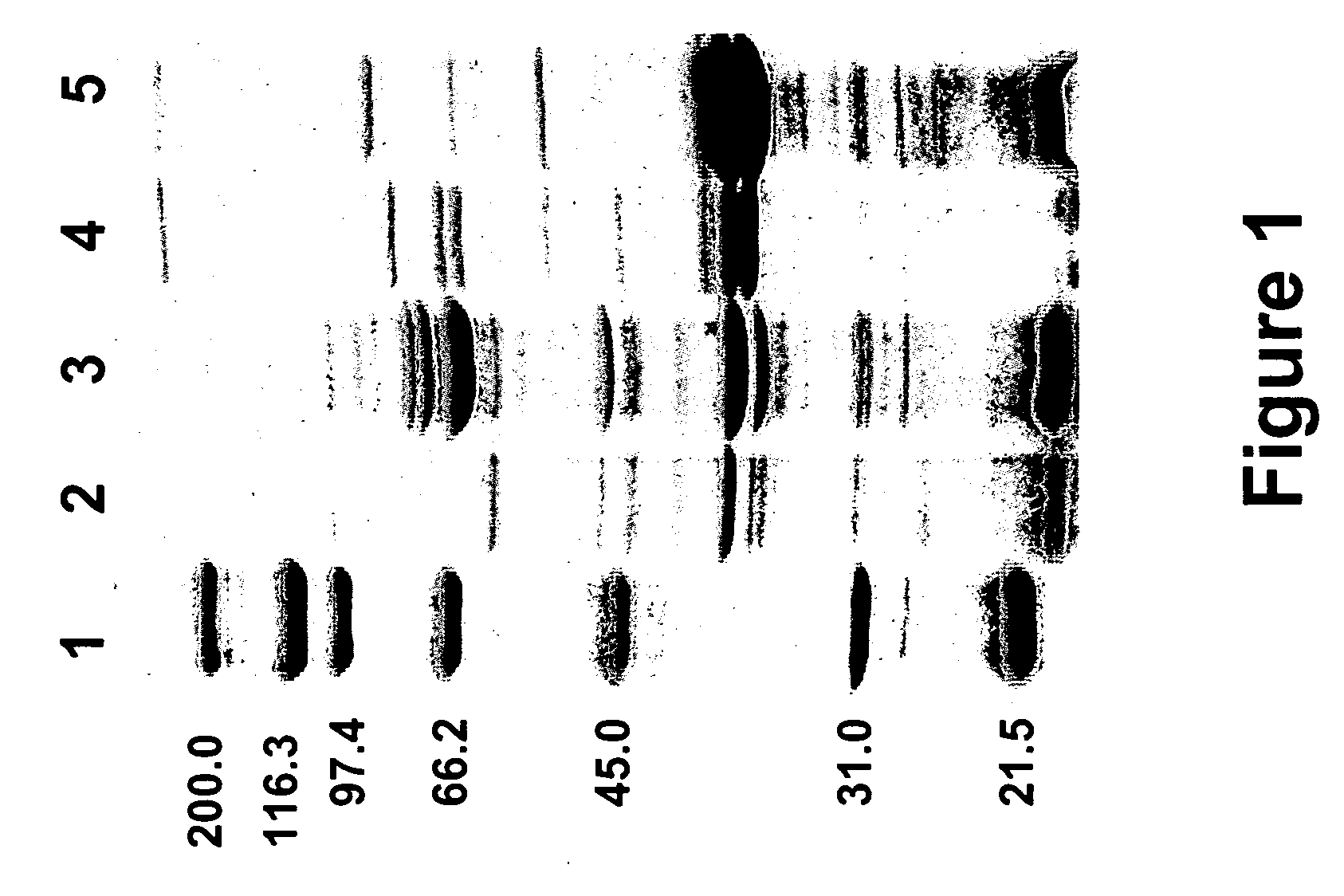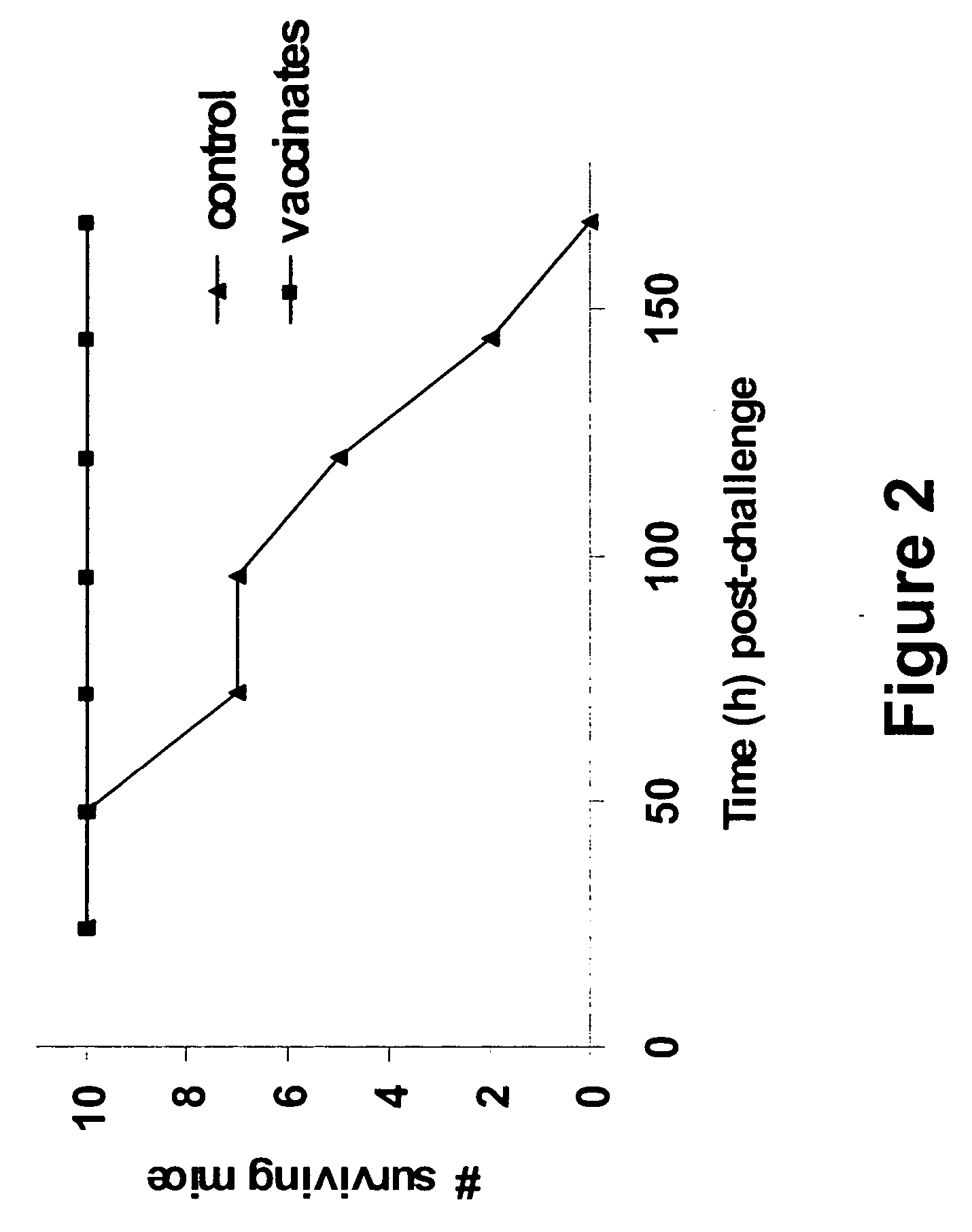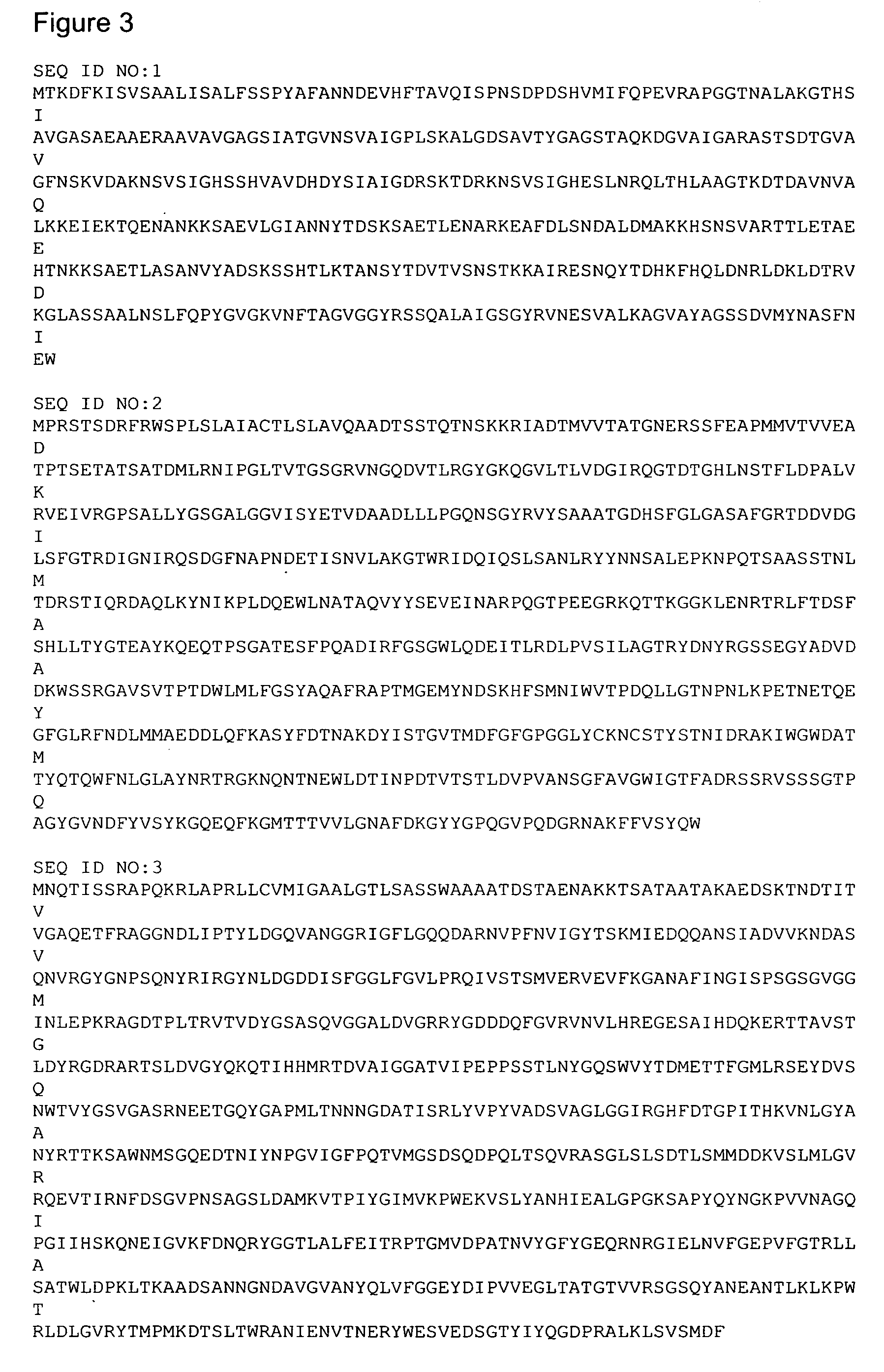Yersinia spp. polypeptides and methods of use
a technology of yersinia spp. and polypeptides, which is applied in the field of yersinia species, can solve the problems of limited ability to correctly diagnose the causative agent, difficult to determine the incidence of human disease caused by y. enterocolitica in the u.s., and the administration of antibiotic therapy may be too late for effective intervention
- Summary
- Abstract
- Description
- Claims
- Application Information
AI Technical Summary
Benefits of technology
Problems solved by technology
Method used
Image
Examples
example 1
Production and Isolation of Metal Regulated Proteins
[0091] The compositions used in the following examples were prepared using the proteins derived from Y. enterocolitica ATCC strain 27729 and Y. pestis strain KIM6+ (obtained from R. D. Perry, University of Kentucky). The two strains were each inoculated from frozen stocks into 25 ml tryptic soy broth (TSB) containing 160 μM 2,2-diprydyl or 300 μM FeCl3, and incubated at 37° C. while shaking at 400 rpm. Following 12 hours of incubation, 5 ml of each culture was transferred into 500 ml of pre-incubated (37° C.) media containing 160 μM 2,2-diprydyl or 300 μM FeCl3 and incubated at 37° C. while stirring at 100 rpm. After 8 hours of incubation, the cultures were centrifuged at 10,000×g for 20 minutes. The bacterial pellets were resuspended in 100 ml of sterile physiological saline and centrifuged at 10,000×g for 10 minutes to remove any contaminating media proteins. The bacterial pellets were then resuspended in 40 ml of Tris-buffered ...
example 2
Preparation of the Immunizing Compositions Derived from Y. enterocolitica
[0092] The proteins made from Y. enterocolitica as described in Example 1 were used to prepare a composition for administration to animals. The composition contained polypeptides having molecular weights of 268 kDa, 92 kDa, 83 kDa, 79 kDa, 70 kDa, 66 kDa, 54 kDa, 45 kDa, 40 kDa, 38 kDa, 37 kDa, 31 kDa, or 28 kDa. The polypeptides having molecular weights of 83 kDa, 70 kDa, and 66 kDa were expressed only under iron limited conditions, and the expression of polypeptides having molecular weights of 268 kDa, 79 kDa, and 45 kDa was enhanced under iron limited conditions.
[0093] A stock vaccine was prepared from the composition by emulsifying the aqueous protein suspension (500 μg total protein / ml) into the commercial adjuvant, EMULSIGEN, (MVP Laboratories, Ralston, Nebr.) using an IKA Ultra Turrax T-50 homogenizing vessel (IKA, Cincinnati, Ohio). The vaccine was administered to mice to give a final dose of 50 μg to...
example 3
Preparation of Challenge Organism
[0094] When used as a challenge, the Y. enterocolitica ATCC strain 27729 was prepared as follows. Briefly, the isolate from a frozen stock was streaked onto a blood agar plate and incubated at 37° C. for 18 hours. A single colony was subcultured into 50 ml Tryptic Soy Broth (Difco) containing 25 μg / ml 2, 2′ dipyridyl. The culture was incubated at 37° C. for 6 hours while rotating at 200 rpm, at which point the culture was centrifuged at 10,000×g for 10 minutes at 4° C. to pellet the bacteria. The bacterial pellet was washed twice by centrifugation in physiological saline at 4° C. The final pellet was resuspended in 25 ml of physiological saline and used for challenge. Just prior to challenge, 1 ml of the above bacterial suspension was serially diluted ten fold to enumerate the number of CFU / mouse dose.
PUM
| Property | Measurement | Unit |
|---|---|---|
| Atomic weight | aaaaa | aaaaa |
| Atomic weight | aaaaa | aaaaa |
| Atomic weight | aaaaa | aaaaa |
Abstract
Description
Claims
Application Information
 Login to View More
Login to View More - R&D
- Intellectual Property
- Life Sciences
- Materials
- Tech Scout
- Unparalleled Data Quality
- Higher Quality Content
- 60% Fewer Hallucinations
Browse by: Latest US Patents, China's latest patents, Technical Efficacy Thesaurus, Application Domain, Technology Topic, Popular Technical Reports.
© 2025 PatSnap. All rights reserved.Legal|Privacy policy|Modern Slavery Act Transparency Statement|Sitemap|About US| Contact US: help@patsnap.com



